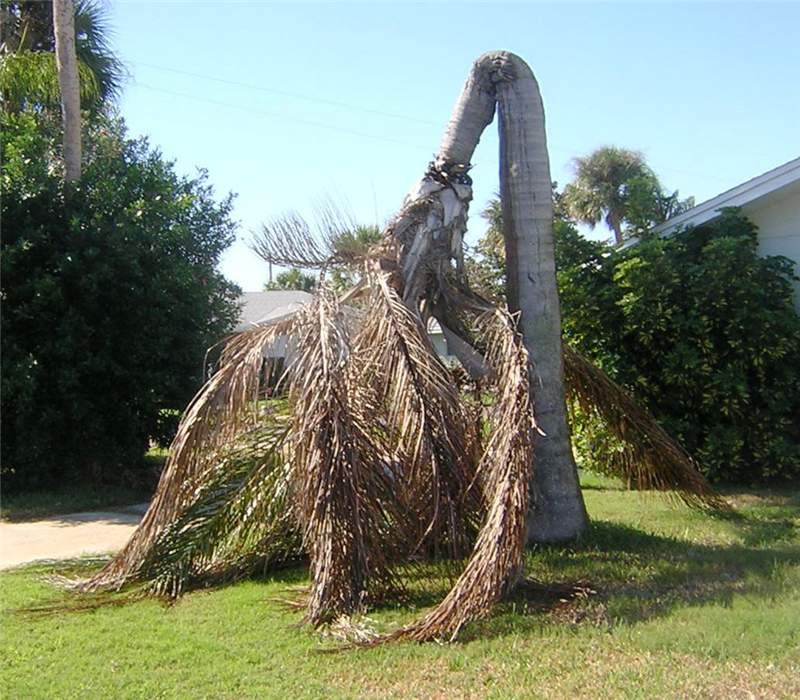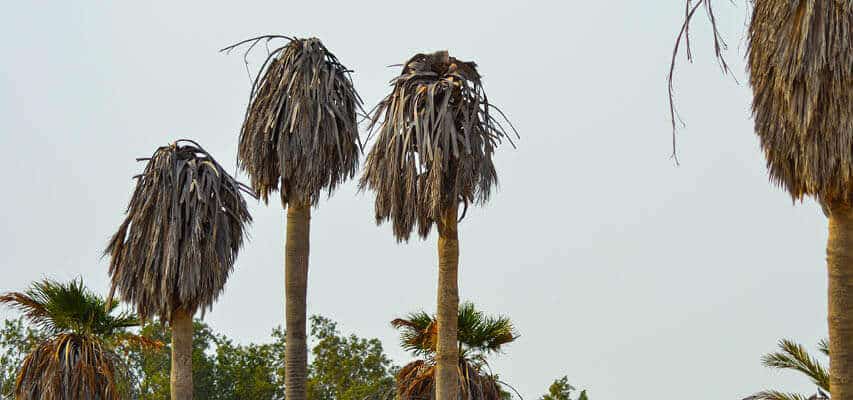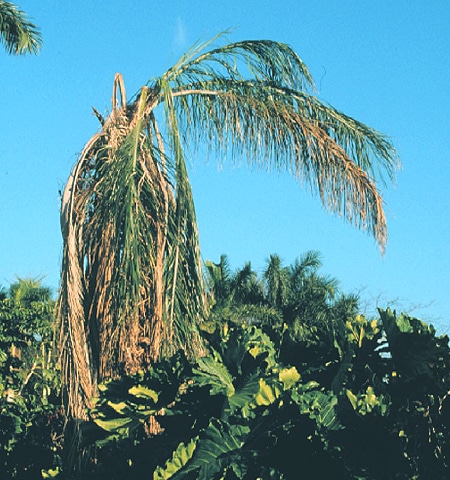The Importance of Healthy Coconut Palms in Agriculture
Coconut palms, scientifically known as Cocos nucifera, play a crucial role in agriculture, especially in tropical and subtropical regions. These versatile trees are not only a source of nutritious coconuts but also contribute significantly to the economy of many countries. Healthy coconut palms are essential for sustaining the production of coconut-based products such as coconut oil, milk, water, and coir, which are in high demand globally.
Moreover, coconut palms are integral to the ecological balance in their native habitats. They help in stabilizing the soil, reducing beach erosion, and providing habitat for various species of wildlife. The aesthetic value of these palms also enhances the landscape, making them vital for the tourism industry in many tropical destinations.
However, the health and productivity of coconut palms are threatened by a range of diseases and pests. These challenges can lead to significant economic losses and negatively impact the livelihoods of farmers and communities dependent on coconut production. Therefore, understanding the importance of maintaining healthy coconut palms is the first step towards implementing effective management strategies to combat these threats.
By prioritizing coconut palm care, farmers and agricultural professionals can ensure the sustainability of this valuable crop. This involves adopting practices such as regular monitoring for signs of disease or pest infestation, implementing natural remedies for palm pests, and applying integrated pest management strategies. Through these efforts, it is possible to protect coconut palms from common threats, thereby securing their contributions to agriculture, the economy, and the environment.
Common Diseases Affecting Coconut Palms
Coconut palms, a symbol of tropical abundance, face several threats that can compromise their health and productivity. Understanding these diseases is crucial for effective management and prevention. One of the most prevalent issues is Lethal Yellowing, a disease caused by phytoplasma that leads to the yellowing of leaves, premature nut fall, and eventually the death of the palm. Early detection and treatment with antibiotics can manage this disease, highlighting the importance of regular monitoring.
Another significant threat is Bud Rot, which affects the palm’s heart, leading to the rotting of the meristematic tissue and causing the young leaves to blacken and die. This condition can be triggered by fungal or bacterial infections, often exacerbated by excessive moisture or injury. Preventative measures include ensuring proper drainage and avoiding mechanical injuries to the palm.
Ganoderma Wilt, caused by the fungus Ganoderma zonatum, presents another challenge. It leads to the decay of the trunk’s base, resulting in the weakening and eventual death of the palm. There is no cure once a palm is infected, making early detection and removal of affected trees critical to prevent the spread of the disease.
Addressing these diseases requires a comprehensive approach that includes regular monitoring, preventive measures, and timely intervention. By understanding the symptoms and causes of these common diseases, coconut palm caretakers can take proactive steps to protect these valuable trees, ensuring their continued contribution to agriculture and the environment.

Identifying Lethal Yellowing: Symptoms and Solutions
Lethal Yellowing (LY) is a devastating disease that affects coconut palms, leading to significant agricultural losses. It is caused by a phytoplasma transmitted by the planthopper insect. Recognizing the symptoms early is crucial for managing and controlling the spread of this disease. The initial signs include the yellowing of older leaves, which gradually spreads to younger leaves, eventually leading to the death of the palm. Other symptoms include premature fruit drop, blackening of the inflorescence, and the collapse of the crown.
Managing LY requires an integrated approach. One effective solution is the removal and destruction of infected palms to prevent the spread of the disease. This should be done as soon as symptoms are identified. Additionally, the use of resistant coconut palm varieties offers a long-term solution to LY. Research and breeding programs have developed varieties that show resistance to the disease, providing a sustainable option for replanting.
Chemical control methods can also be employed, focusing on the management of the insect vector. Systemic insecticides have been used to reduce the population of the planthopper, thereby limiting the transmission of the disease. However, chemical control should be used judiciously, considering the environmental impact and the potential development of resistance.
Finally, maintaining the overall health of coconut palms is essential in managing LY. Proper nutrition, irrigation, and spacing can enhance the resilience of palms to diseases. Farmers and gardeners are encouraged to adopt good agricultural practices, including regular monitoring of palms for any signs of disease, to ensure the health and productivity of their coconut palms.
Bud Rot in Coconut Palms: Causes and Prevention
Bud rot, a devastating condition for coconut palms, is primarily caused by a fungal infection that attacks the heart of the palm, leading to the decay of the meristematic tissue. This disease is particularly harmful because it targets the growing part of the palm, which can result in the death of the tree if not addressed promptly. The initial symptoms of bud rot include the wilting and discoloration of the youngest leaves, followed by a rotting smell emanating from the crown as the disease progresses.
The conditions that favor the development of bud rot include high humidity and temperatures, which are common in tropical regions where coconut palms thrive. Injuries to the palm, whether from pruning, pests, or mechanical damage, can also provide entry points for the pathogens. Preventing bud rot involves a combination of cultural and chemical practices aimed at reducing the risk factors. Good agricultural practices such as proper spacing to ensure adequate air circulation, regular monitoring for early detection of symptoms, and the application of appropriate fungicides when necessary are crucial.
Natural remedies for palm pests and diseases also play a role in preventing bud rot. For instance, applying neem oil or other organic fungicides can help control fungal growth without harming beneficial organisms in the ecosystem. Additionally, ensuring that the coconut palms are well-nourished through balanced fertilization can enhance their resistance to diseases.
It’s important for farmers and gardeners to be vigilant and act swiftly at the first sign of bud rot. Early detection and proper management are key to preventing the spread of the disease and ensuring the health and productivity of coconut palms.

Ganoderma Wilt: A Silent Killer of Coconut Trees
Ganoderma wilt, caused by the fungus Ganoderma lucidum, is a formidable disease that poses a significant threat to coconut palms worldwide. Often referred to as the silent killer, this disease progresses stealthily, making it challenging to detect in its early stages. The fungus attacks the palm’s vascular system, disrupting water and nutrient transport, which eventually leads to the tree’s demise.
The initial symptoms of Ganoderma wilt include yellowing and wilting of the lower leaves, followed by a gradual decline in the overall health of the tree. As the disease progresses, the older leaves droop and die, a clear indication of the palm’s deteriorating condition. One of the most telling signs of Ganoderma infection is the appearance of a conk or basidiocarp, a mushroom-like growth that emerges from the trunk’s base. This growth is the reproductive structure of the fungus and serves as a definitive indicator of infection.
Unfortunately, there is no cure for Ganoderma wilt once a coconut palm is infected. The best approach to managing this disease is prevention. Regular monitoring for symptoms, especially the appearance of conks, is crucial. Infected trees should be removed promptly to prevent the spread of the fungus to nearby healthy palms. Sanitation measures, such as cleaning tools and equipment used on or near infected trees, can also help reduce the risk of spreading the disease.
Implementing good cultural practices is essential for preventing Ganoderma wilt. Ensuring proper nutrition, adequate watering, and avoiding injuries to the palm can enhance the tree’s resistance to disease. Research into resistant coconut palm varieties offers hope for the future, providing a potential strategy for managing Ganoderma wilt in affected regions.
Major Pests Targeting Coconut Palms
Coconut palms, a vital agricultural commodity, face threats from various pests, significantly impacting their health and productivity. Understanding these pests is crucial for effective coconut palm care. Among the most notorious pests are the Rhinoceros Beetle and the Red Palm Weevil, each causing extensive damage to coconut palms.
The Rhinoceros Beetle, known for its strong horn, targets the crown of the coconut palm, feeding on the sap and thereby stunting the growth of young trees. This pest’s presence is often indicated by visible damage to the fronds and a reduction in the overall health of the palm. Effective pest control for palms against the Rhinoceros Beetle includes regular monitoring, the use of traps, and maintaining cleanliness around the plantation to remove potential breeding sites.
On the other hand, the Red Palm Weevil, an invasive species, poses a significant threat to coconut palms worldwide. It burrows into the trunk, laying eggs that hatch into larvae, which then feed on the internal tissues of the palm, leading to a coconut tree infection. Symptoms of diseased coconut palm due to the Red Palm Weevil include wilting, yellowing, and eventually the death of the palm. Eradication efforts focus on early detection through pheromone traps and the removal and destruction of infested trees to prevent further spread.
Natural remedies for palm pests also play a crucial role in integrated pest management strategies. These include the use of beneficial insects that prey on these pests and botanical pesticides that are less harmful to the environment. By adopting a comprehensive approach to pest control, incorporating both preventive and curative measures, the health and longevity of coconut palms can be significantly improved, ensuring their continued contribution to agriculture.

The Red Palm Weevil: Identification and Eradication
The Red Palm Weevil (Rhynchophorus ferrugineus) is one of the most devastating pests targeting coconut palms. Originating from Asia, this pest has spread to other parts of the world, causing significant damage to palm trees. The adult weevils are large, ranging from 2 to 5 cm in length, with a distinctive reddish-brown color. They are known for their voracious appetite for the soft tissues inside the coconut palm, which can lead to the tree’s death if not managed promptly.
Identification of the Red Palm Weevil infestation is crucial for early intervention. Symptoms include wilting of the fronds, yellowing, and eventually, the collapse of the palm. One of the telltale signs is the presence of a fermented smell from the feeding galleries, along with the oozing of a viscous fluid from the entry holes. Hearing distinct chewing sounds from within the palm can also indicate an active infestation.
Eradication and management of the Red Palm Weevil involve a combination of cultural, biological, and chemical methods. Early detection is key; therefore, regular monitoring of the palms is essential. Infested palms should be removed and destroyed to prevent the spread of the weevils. Biological control methods include the use of pheromone traps to capture adult weevils and the introduction of natural predators or pathogens. Chemical treatments can be effective but should be used as a last resort due to their environmental impact. Preventive measures, such as avoiding injuries to the palms and maintaining proper sanitation around the plantation, can significantly reduce the risk of infestation.
Integrated pest management strategies that combine monitoring, cultural practices, biological control, and judicious chemical use are the most effective way to combat the Red Palm Weevil. By adopting these practices, farmers and gardeners can protect their coconut palms from this destructive pest and ensure the sustainability of their plantations.
Rhinoceros Beetle Infestation: Control Measures
The Rhinoceros Beetle, a formidable pest targeting coconut palms, poses a significant threat to the health and productivity of these trees. Recognizable by its large size and the horn-like structure on its head, this beetle primarily attacks young palms, boring into the crown to feed on the developing leaves. As the leaves mature and unfold, the damage becomes evident in the form of V-shaped cuts or holes, severely affecting the aesthetic value and growth of the coconut palm.
Control measures for Rhinoceros Beetle infestation are crucial to safeguard coconut palms. One effective strategy is the use of pheromone traps, which lure adult beetles and prevent them from reproducing. Regular monitoring and replacement of these traps are essential to maintain their effectiveness. Additionally, maintaining cleanliness in the plantation area by removing potential breeding sites, such as decaying logs and stumps, can significantly reduce the beetle population. Biological control methods, such as introducing natural predators of the Rhinoceros Beetle or applying entomopathogenic fungi, have also shown promise in managing beetle populations without harming the environment.
Another critical aspect of control is community involvement. Since Rhinoceros Beetles can travel from one area to another, it is vital for neighboring plantations to collaborate in control efforts. Sharing information and resources can lead to more effective management of the pest across a wider area. Lastly, research into more sustainable and environmentally friendly control methods continues to be important. Innovations in pest control for palms, including natural remedies and improved biological controls, offer hope for more effective management of Rhinoceros Beetle infestations in the future.
Integrated Pest Management for Coconut Palms
Integrated Pest Management (IPM) is a sustainable approach to managing pests by combining biological, cultural, physical, and chemical tools in a way that minimizes economic, health, and environmental risks. For coconut palms, IPM is crucial in preventing and controlling the myriad of pests and diseases that threaten these trees. The first step in an effective IPM strategy is the accurate identification of the pests or diseases affecting the coconut palm. This involves monitoring and recognizing the symptoms of diseased coconut palm, such as changes in leaf color, wilting, or the presence of pests on the tree.
Once the problem is identified, cultural practices can be implemented as a first line of defense. This includes maintaining proper spacing between trees to reduce humidity and increase air circulation, which can help prevent the spread of diseases. Regular cleaning of the area around the trees to remove fallen leaves and debris can also reduce pest populations. Natural remedies for palm pests, such as introducing beneficial insects that prey on harmful pests, can be an effective and environmentally friendly option.
Chemical control should be considered as a last resort and used judiciously, focusing on targeted applications to affected areas rather than broad-spectrum pesticide use. Selecting chemicals that are less harmful to beneficial organisms and the environment is crucial. Additionally, rotating different types of chemicals can help prevent pests from developing resistance.
Ultimately, the goal of IPM is not to eradicate all pests but to manage them at levels that do not cause significant harm to the coconut palms. By employing a combination of strategies tailored to the specific conditions and challenges of the coconut palm, farmers and gardeners can effectively protect their trees from pests and diseases, ensuring their health and productivity for years to come.
Future Strategies in Combating Diseases and Pests in Coconut Palms
As we look towards the future, the battle against diseases and pests in coconut palms requires innovative and sustainable strategies. With the increasing threat of climate change and the evolution of pests and diseases, it’s imperative that we develop more resilient coconut palm varieties. Genetic engineering and traditional breeding techniques offer promising avenues for creating disease-resistant and pest-tolerant coconut palms. These scientific advancements not only aim to enhance the coconut palm’s resistance but also its productivity and nutritional value.
Moreover, the integration of technology in agriculture, such as the use of drones for the early detection of diseases and pests, can revolutionize coconut palm care. Drones equipped with advanced imaging technologies can survey large areas of coconut plantations, identifying early signs of infestation or disease that might not be visible to the naked eye. This early detection is crucial for preventing the spread of diseases and pests and minimizing potential losses.
Another future strategy involves the adoption of more organic and natural remedies for palm pests. The overuse of chemical pesticides has led to numerous environmental and health issues. Therefore, there’s a growing emphasis on finding natural predators and biological control agents that can manage pest populations without harming the ecosystem. Research into natural remedies and their application in integrated pest management systems is vital for sustainable coconut palm agriculture.
Lastly, education and knowledge sharing play a critical role in combating diseases and pests in coconut palms. By disseminating information on best practices, new research findings, and innovative solutions, we can empower farmers and agricultural professionals worldwide. Collaborative efforts and international cooperation are essential in developing and implementing strategies that address the global challenges facing coconut palm cultivation.
